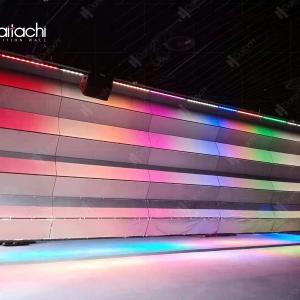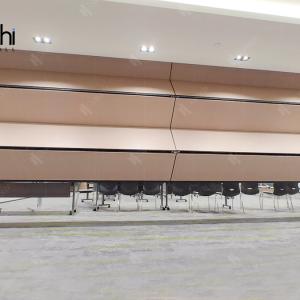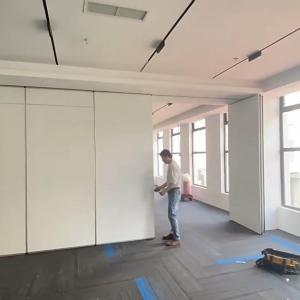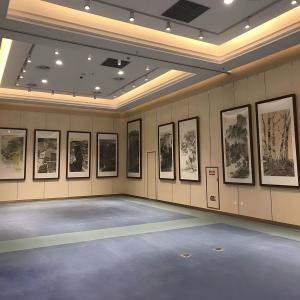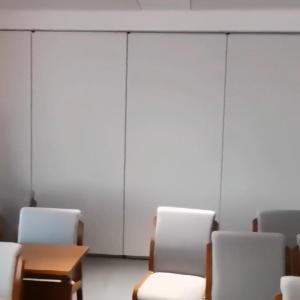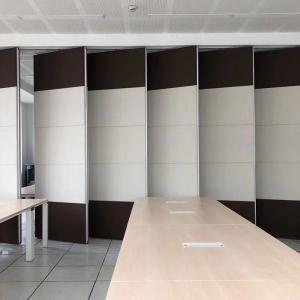Movable Partition Walls for office have become a game-changer in modern architecture and interior design, offering unmatched flexibility in dividing and adapting spaces. Whether in residential homes, office buildings, or commercial establishments, these Office Partitioning systems provide an easy and efficient way to adjust interior layouts according to changing needs. This article explores the key features, benefits, types, and installation considerations of acoustic Movable Partition Walls, making it a comprehensive guide for anyone interested in optimizing their space.
What Are Soundproof Movable Partition Walls?
Sliding folding partitions movable walls, also known as operable walls or sliding partitions, are non-load-bearing barriers designed to be easily repositioned or removed. Unlike traditional permanent walls, acoustic operable walls for office offer dynamic flexibility, allowing users to change room configurations as needed. These movable acoustic walls are ideal for spaces that require regular reconfiguration, such as offices, conference rooms, and multi-purpose areas.
Foldable room partition come in various styles, each suited to different requirements. The most common types include:
Accordion Partitions These partitions fold like an accordion, providing a space-saving solution when retracted. They are commonly used in venues where space needs to be divided temporarily, such as auditoriums or classrooms.
Sliding Partitions Sliding Movable Walls operate on tracks and can be pulled across the room to create a temporary division. They are popular in both commercial and residential spaces, offering a seamless transition between open and divided areas.
Folding Panel Partitions These foldable partition wall are similar to accordion partitions but often consist of larger, individual panels that fold and stack against one wall. They are widely used in banquet halls and conference centers for creating adaptable spaces.
Glass Movable Partitions For a more modern and open feel, Glass Movable Partitions allow natural light to flow between divided spaces while still maintaining the ability to partition a room. These are often used in corporate offices and high-end residential properties.
Curtain Partitions Although technically not a "wall," movable curtains or fabric partitions provide a soft and flexible way to separate spaces. They are cost-effective and can be used in areas that don’t require complete soundproofing or privacy.
Acoustic sliding folding partitionoffer numerous advantages, particularly in environments that require space adaptability. Some of the main benefits include:
Space Optimization The most obvious advantage of modular room dividers is their ability to create versatile spaces. Whether it's turning a large room into smaller, private meeting areas or dividing a classroom into multiple sections, movable walls help maximize the use of available space.
Cost-Effective While traditional construction of permanent walls can be expensive and time-consuming, foldable room partition are often more affordable and quicker to install. For businesses or homes on a budget, this offers a way to customize space without costly renovations.
Flexibility Temporary partition wall for hotel can be repositioned or removed as needed, making them ideal for spaces that require frequent changes in layout. Offices, conference halls, and event spaces all benefit from the adaptability that these walls provide.
Enhanced Acoustics Many collapsible operable partition walls are designed with soundproofing materials, offering noise reduction between divided spaces. This feature is particularly valuable in office environments, studios, and conference rooms where privacy and focus are essential.
Aesthetic Appeal acoustic operable walls come in a wide variety of materials and finishes, including wood, glass, and metal. This home movable partition wall versatility allows them to match the existing décor of a space, adding an element of design that complements the overall aesthetic.
Quick Installation and Maintenance Unlike permanent walls that require complex construction, movable partitions are easier and faster to install. Movable partition with wheels also generally require less maintenance, especially if high-quality, durable materials are chosen.
Folding dividers for rooms are incredibly versatile and can be used in a wide range of settings, including:
Room divider wall panels allow offices to be reconfigured as teams grow or project needs change. They can create private workstations, conference rooms, or even collaborative spaces, all while maintaining an open and airy environment.
Residential Use In homes, folding partition wall systems can create temporary rooms or define space in open-plan layouts. For example, they can separate a living area from a dining area or create a private home office that can be closed off during work hours and opened up when not in use.
Event Spaces and Convention Centers For large venues, office separation panels provide the flexibility to host multiple events simultaneously or adjust the size of the space depending on the number of attendees. This makes them ideal for convention centers, ballrooms, and exhibition halls.
Schools and Educational Institutions foldable partition wall are often used in educational settings to divide classrooms, study areas, or multipurpose rooms. They can also serve to separate noisy activities from quiet zones.
Healthcare Facilities Hospitals and clinics often use modular room dividers to create private consultation rooms or to divide large areas for various medical treatments or waiting spaces.
While movable partition walls for hospital are generally easier to install than traditional walls, proper planning and execution are still important. Here’s a general overview of the installation process:
Site Assessment and MeasurementBefore installation, it's crucial to assess the space and accurately measure the area where the movable partition will be placed. This includes measuring the height, width, and any obstructions in the space.
Choosing the Right Partition System Selecting the appropriate panel partition type depends on the specific needs of the space—whether you need soundproofing, visual privacy, or a transparent wall to allow natural light. Consulting with professionals can help determine the best choice.
Track and Framework Setup For sliding partition or folding partitions, installing a track system or framework is essential. This track serves as the foundation for the partition to slide or fold smoothly.
Partition Installation Once the framework is in place, the soundproof movable partition panels are mounted onto the tracks or hinges. Adjustments may be needed to ensure that the panels fit properly and operate smoothly.
Finishing Touches After installation, the final step is to test the conference room partition’s operation and ensure that any seals or acoustic features are properly integrated.
Conclusion
Movable sliding walls are an innovative and highly practical solution for creating adaptable spaces in both residential and commercial environments. Their flexibility, cost-effectiveness, and ease of installation make them a go-to choice for modern spaces that require frequent reconfiguration. By selecting the right partition system, you can enhance the functionality, aesthetics, and efficiency of any room—transforming how spaces are used, divided, and experienced.
What Are Soundproof Movable Partition Walls?
Sliding folding partitions movable walls, also known as operable walls or sliding partitions, are non-load-bearing barriers designed to be easily repositioned or removed. Unlike traditional permanent walls, acoustic operable walls for office offer dynamic flexibility, allowing users to change room configurations as needed. These movable acoustic walls are ideal for spaces that require regular reconfiguration, such as offices, conference rooms, and multi-purpose areas.
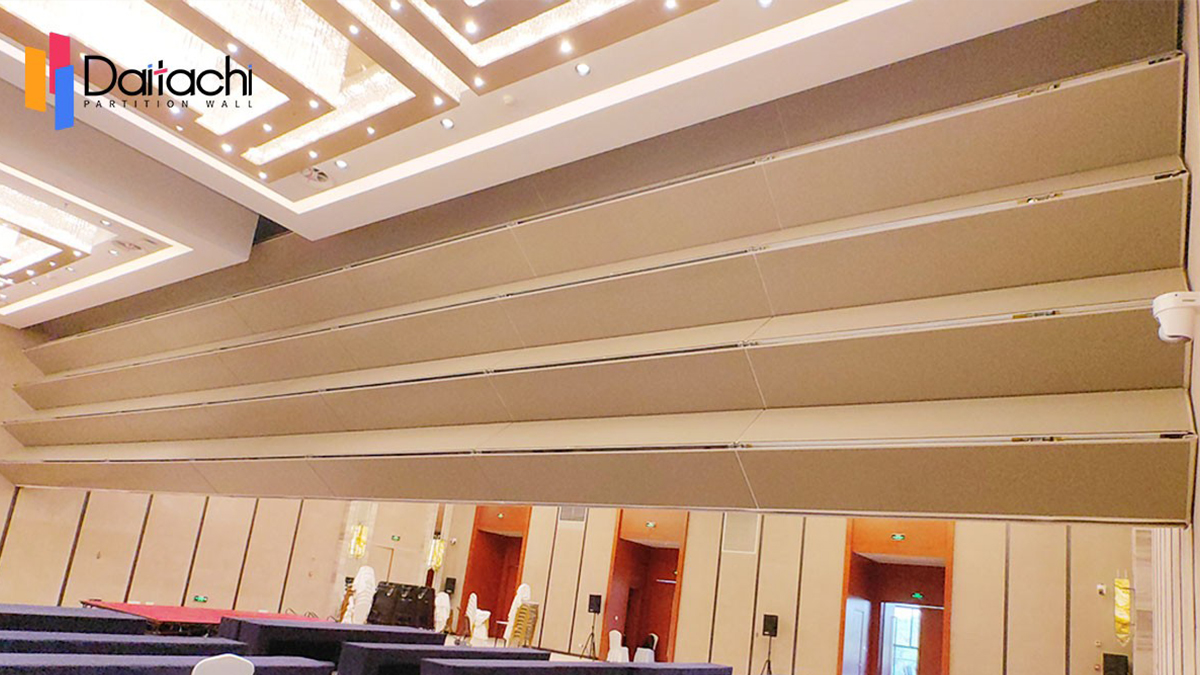
Foldable room partition come in various styles, each suited to different requirements. The most common types include:
Accordion Partitions These partitions fold like an accordion, providing a space-saving solution when retracted. They are commonly used in venues where space needs to be divided temporarily, such as auditoriums or classrooms.
Sliding Partitions Sliding Movable Walls operate on tracks and can be pulled across the room to create a temporary division. They are popular in both commercial and residential spaces, offering a seamless transition between open and divided areas.
Folding Panel Partitions These foldable partition wall are similar to accordion partitions but often consist of larger, individual panels that fold and stack against one wall. They are widely used in banquet halls and conference centers for creating adaptable spaces.
Glass Movable Partitions For a more modern and open feel, Glass Movable Partitions allow natural light to flow between divided spaces while still maintaining the ability to partition a room. These are often used in corporate offices and high-end residential properties.
Curtain Partitions Although technically not a "wall," movable curtains or fabric partitions provide a soft and flexible way to separate spaces. They are cost-effective and can be used in areas that don’t require complete soundproofing or privacy.
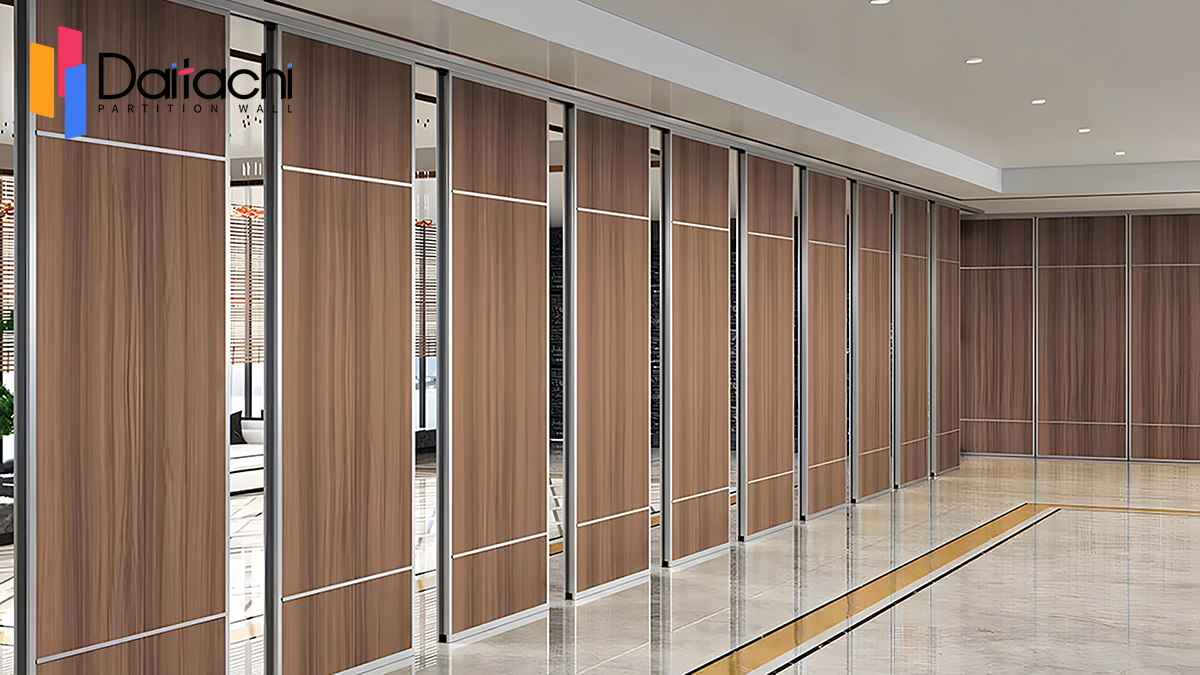
Acoustic sliding folding partitionoffer numerous advantages, particularly in environments that require space adaptability. Some of the main benefits include:
Space Optimization The most obvious advantage of modular room dividers is their ability to create versatile spaces. Whether it's turning a large room into smaller, private meeting areas or dividing a classroom into multiple sections, movable walls help maximize the use of available space.
Cost-Effective While traditional construction of permanent walls can be expensive and time-consuming, foldable room partition are often more affordable and quicker to install. For businesses or homes on a budget, this offers a way to customize space without costly renovations.
Flexibility Temporary partition wall for hotel can be repositioned or removed as needed, making them ideal for spaces that require frequent changes in layout. Offices, conference halls, and event spaces all benefit from the adaptability that these walls provide.
Enhanced Acoustics Many collapsible operable partition walls are designed with soundproofing materials, offering noise reduction between divided spaces. This feature is particularly valuable in office environments, studios, and conference rooms where privacy and focus are essential.
Aesthetic Appeal acoustic operable walls come in a wide variety of materials and finishes, including wood, glass, and metal. This home movable partition wall versatility allows them to match the existing décor of a space, adding an element of design that complements the overall aesthetic.
Quick Installation and Maintenance Unlike permanent walls that require complex construction, movable partitions are easier and faster to install. Movable partition with wheels also generally require less maintenance, especially if high-quality, durable materials are chosen.
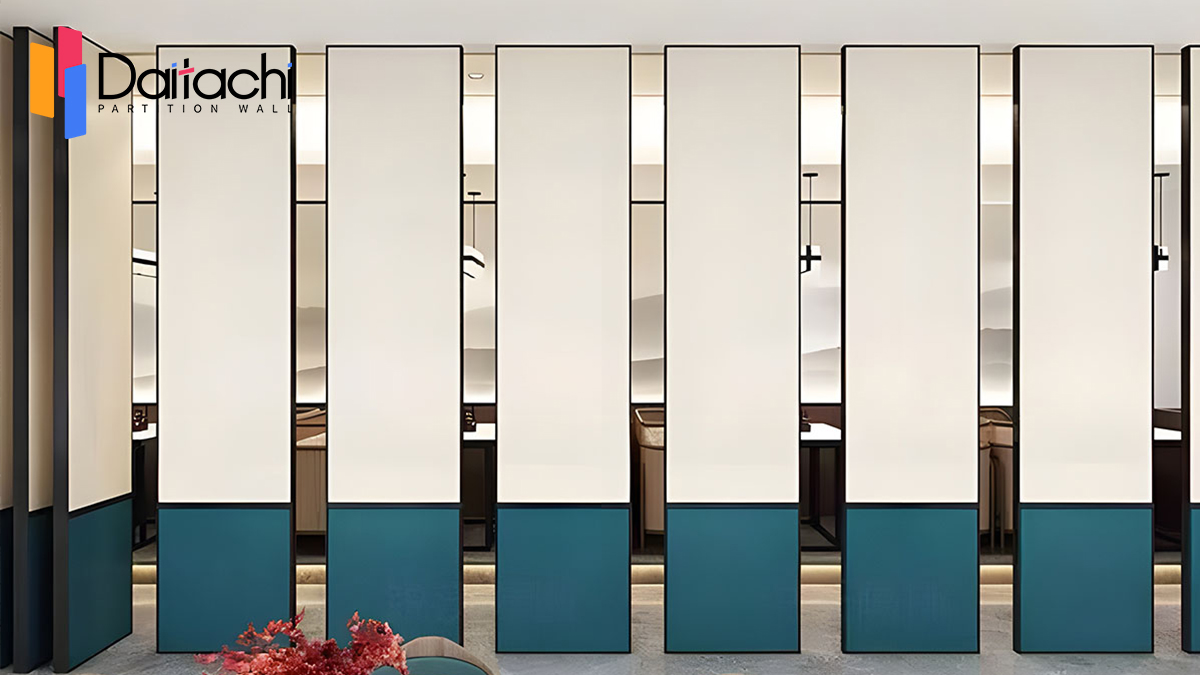
Folding dividers for rooms are incredibly versatile and can be used in a wide range of settings, including:
Room divider wall panels allow offices to be reconfigured as teams grow or project needs change. They can create private workstations, conference rooms, or even collaborative spaces, all while maintaining an open and airy environment.
Residential Use In homes, folding partition wall systems can create temporary rooms or define space in open-plan layouts. For example, they can separate a living area from a dining area or create a private home office that can be closed off during work hours and opened up when not in use.
Event Spaces and Convention Centers For large venues, office separation panels provide the flexibility to host multiple events simultaneously or adjust the size of the space depending on the number of attendees. This makes them ideal for convention centers, ballrooms, and exhibition halls.
Schools and Educational Institutions foldable partition wall are often used in educational settings to divide classrooms, study areas, or multipurpose rooms. They can also serve to separate noisy activities from quiet zones.
Healthcare Facilities Hospitals and clinics often use modular room dividers to create private consultation rooms or to divide large areas for various medical treatments or waiting spaces.
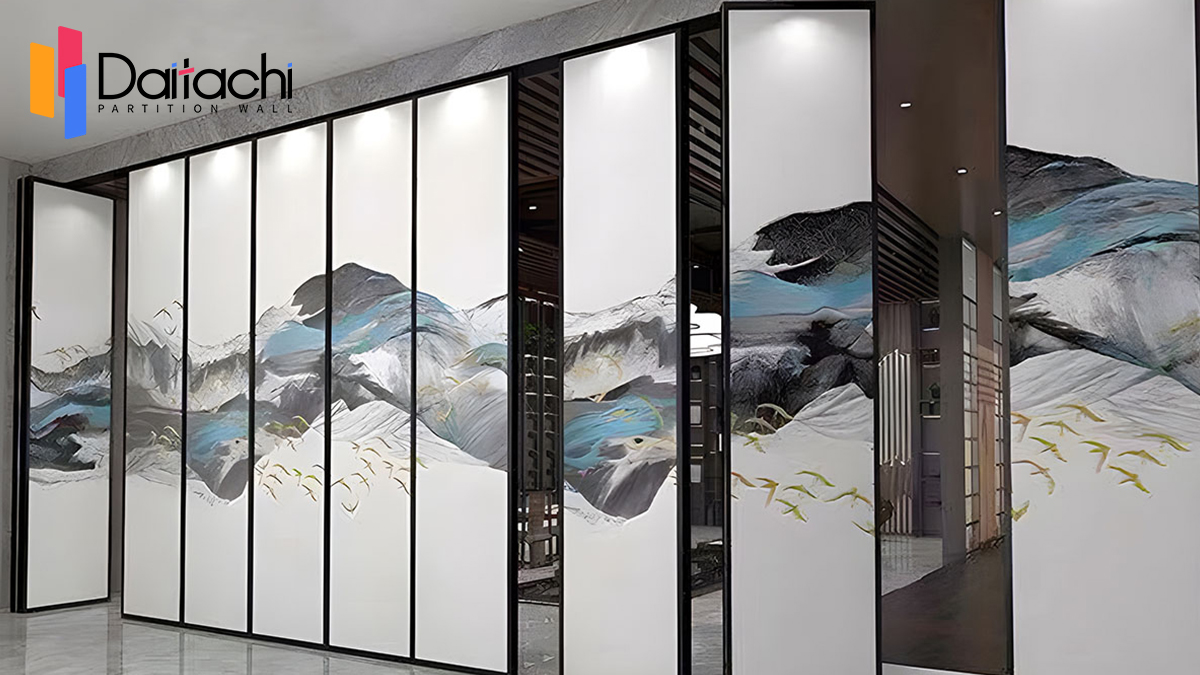
While movable partition walls for hospital are generally easier to install than traditional walls, proper planning and execution are still important. Here’s a general overview of the installation process:
Site Assessment and MeasurementBefore installation, it's crucial to assess the space and accurately measure the area where the movable partition will be placed. This includes measuring the height, width, and any obstructions in the space.
Choosing the Right Partition System Selecting the appropriate panel partition type depends on the specific needs of the space—whether you need soundproofing, visual privacy, or a transparent wall to allow natural light. Consulting with professionals can help determine the best choice.
Track and Framework Setup For sliding partition or folding partitions, installing a track system or framework is essential. This track serves as the foundation for the partition to slide or fold smoothly.
Partition Installation Once the framework is in place, the soundproof movable partition panels are mounted onto the tracks or hinges. Adjustments may be needed to ensure that the panels fit properly and operate smoothly.
Finishing Touches After installation, the final step is to test the conference room partition’s operation and ensure that any seals or acoustic features are properly integrated.
Conclusion
Movable sliding walls are an innovative and highly practical solution for creating adaptable spaces in both residential and commercial environments. Their flexibility, cost-effectiveness, and ease of installation make them a go-to choice for modern spaces that require frequent reconfiguration. By selecting the right partition system, you can enhance the functionality, aesthetics, and efficiency of any room—transforming how spaces are used, divided, and experienced.
